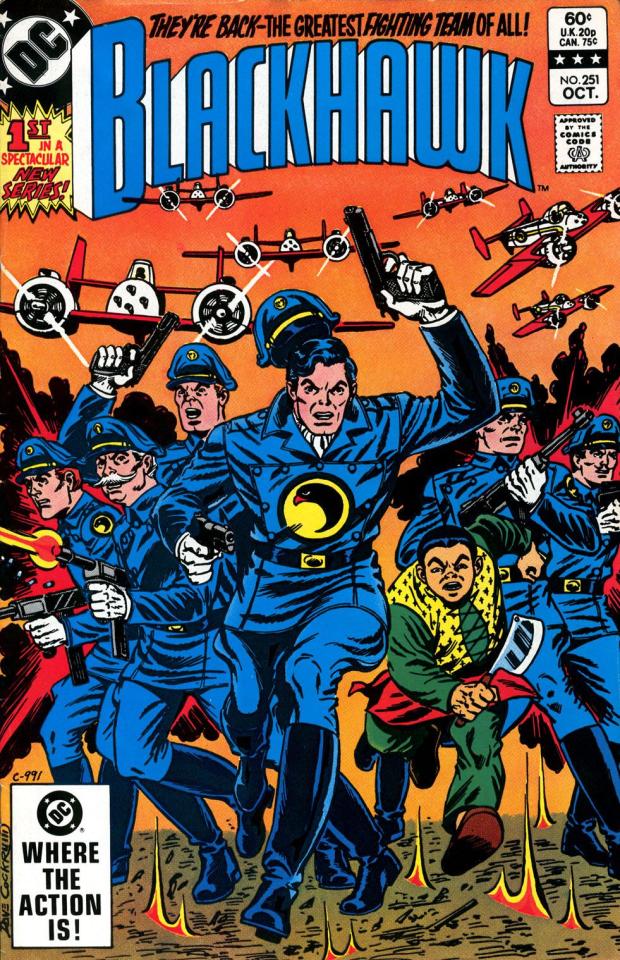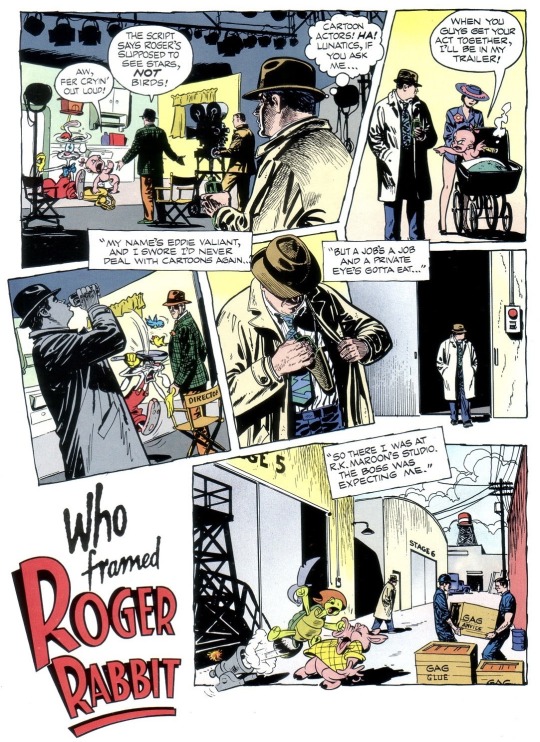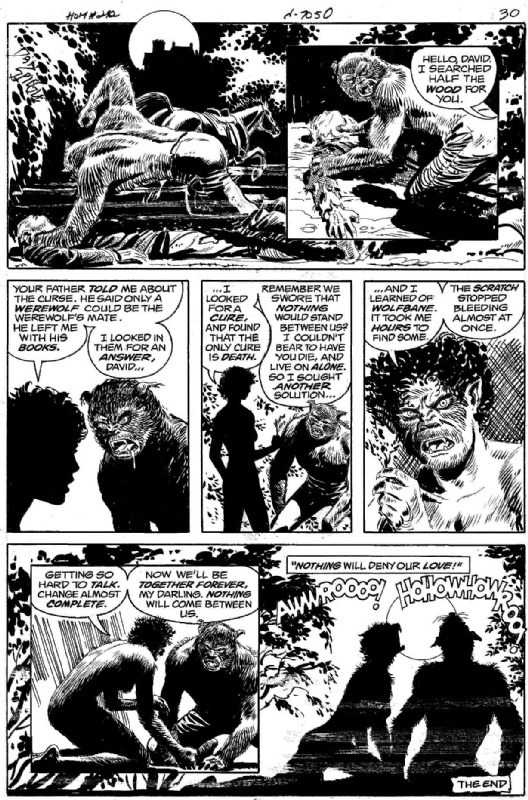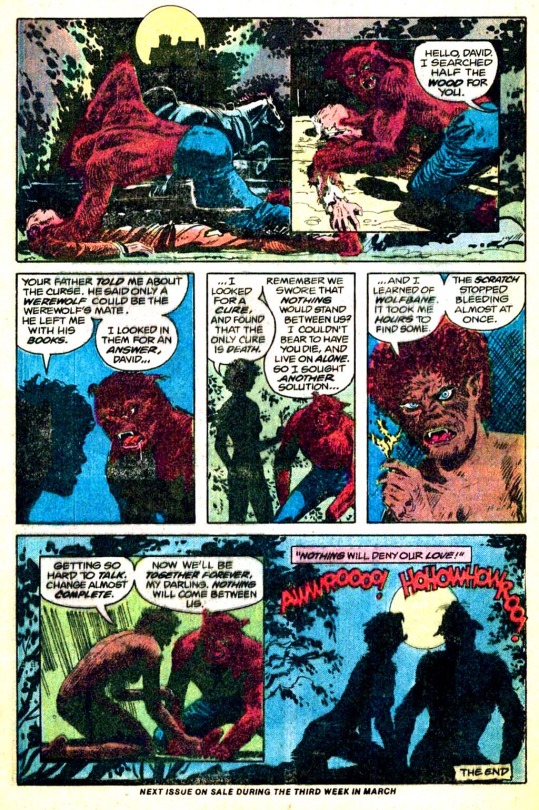#Dan Spiegle
Explore tagged Tumblr posts
Text

another WORLD FAMOUS 79¢ WHITMAN COMICS 2 PAK from the Bell Rules Collection
Featuring Beyond The Black Hole no.4 (1980)
additional information here
#whitman comics 2 pak#whitman comics#western publishing#Dan Spiegle#Michael Teitelbaum#Chuck Liese#40¢
55 notes
·
View notes
Text

Who framed Roger Rabbit - comic adaptation, 1988
49 notes
·
View notes
Text
The Nemesis (Tom Tresser) first appeared in Brave and the Bold 166#, cover date September, 1980. He was created by Cary Burkett and Dan Spiegle. ("Batman and Black Canary: Requiem for 4 Canaries", and "Nemesis", Brave and the Bold 166#, DC Comic Event)

#nerds yearbook#real life event#first appearance#comic book#dc#dc comics#september#1980#anthology#brave and the bold#michael fleisher#dick giordano#cary burkett#dan spiegle#batman#black canary#commissioner gordon#james gordon#jim gordon#penguin#gatham city#vigilante#tom tresser#nemesis#marjorie marshall
20 notes
·
View notes
Text






October 1982 to November 1984. Among the segments of DC's voluminous archives that they ought to properly reprint but probably never will is this early 1980s revival of aviator hero Blackhawk by Mark Evanier and Dan Spiegle. Created by Will Eisner and Chuck Cuidera for Quality Comics back in 1941, the Blackhawks were a multinational paramilitary squadron, with vaguely kinky black leather uniforms and special aircraft they operated from their own secret private island. They fought the Nazis during WW2 and later branched out into anticommunism and international supervillains. The original series was for years defined by excellent artwork (in particular by Reed Crandall), broad characterization, exaggerated ethnic accents, and some egregious racism (much of it directed at the Blackhawks' Chinese cook/mascot, "Chop-Chop"). In the late '60s, there was a brief, ludicrous attempt to turn the characters into superheroes, which hastened the demise of the original book, but the Blackhawks still had their fans — including Steven Spielberg, whose interest in developing a BLACKHAWK feature film occasioned this revival.
Probably the best word for this 23-issue run is "solid." It returns the characters to their original WW2 milieu, dials down the racism (the Chinese character eventually even gets a proper uniform), and offers some very competent storytelling from Evanier and Spiegle. The individual plots are seldom outstanding, but there are only a few real duds, and it's significantly more consistent than most monthly books of its era. Evanier and Spiegle were a good team, as further evidenced by their charming creator-owned CROSSFIRE series, launched through Eclipse toward the end of this run, although it wasn't enough to keep the BLACKHAWK book alive after Spielberg's interest lapsed.
The 1987–1988 Howard Chaykin miniseries (later collected as BLACKHAWK: BLOOD & IRON) is flashier and more fun, although it remains controversial. Chaykin made Blackhawk (whom Chaykin named Janos Prohaska, after a real-world Hollywood stuntman best known today as the guy who played the Horta on the STAR TREK TOS episode "The Devil in the Dark") an abrasive dick, and sidelined most of the rest of the group in favor of a new Lady Blackhawk, a brassy American Communist named Natalie Reed. (Chaykin did at least give "Chop-Chop" a real name — Weng Chan.) The Evanier/Spiegle series was not intended to reinvent the characters so much as to present a palatable median version that could provide the foundation for a feature film, so while it's not as dynamic or as stylish, it's also much less confrontational. For some, that makes it the definitive modern treatment of this venerable franchise.
30 notes
·
View notes
Text

Cartoon Actors, HA! Lunatics, If You Ask Me… “Who Framed Roger Rabbit Comics Adaptation” (1988)
#80s#amblin#disney#marvel comics#marvel graphic novel#who framed roger rabbit#character designs#roger rabbit#baby herman#eddie valiant#comic page#dan spiegle#Daan Jippes
51 notes
·
View notes
Text

Original Art - Saga Of The Swamp Thing #02 Pg 25 (1982) by Dan Spiegle
#Comics#DC Comics#Saga Of The Swamp Thing#Phantom Stranger#Dan Spiegle#Fantasy#Fantasy Comics#Vintage#Art#Original Art#DC#Firefighters#1982#1980s#80s
11 notes
·
View notes
Text

Dan Spiegle, 1971.
11 notes
·
View notes
Text




The Black Hood by Dan Spiegle
#black hood#dan spiegle#archie comics#m l j magazines#red circle comics#bronze age#john carbonaro#rich margopoulos
3 notes
·
View notes
Text

Magnus, Robot Fighter by Dan Spiegle
#Dan Spiegle#gold key comics#valiant comics#acclaim comics#dark horse comics#magnus robot fighter 4000 ad#magnus robot fighter#art#artwork#comics#vintage comics#vintage superheroes#golden age comics#golden age superheroes
7 notes
·
View notes
Text

George Wilson, 1968
#captain venture#captain venture and the land beneath the sea#gold key#gold key comics#15¢#gaylord dubois#dan spiegle
3 notes
·
View notes
Text


"Hair Apparent!" in House of Mystery #292, May 1981, written by Gerry Conway, original art by Dan Spiegle
39 notes
·
View notes
Text

Dan Spiegle “The Beauty of the Beast” The Phantom Stranger in The Saga of Swamp Thing #3 (1982) Source
Colors by Adrienne Roy

#dan spiegle#The Beauty of the Beast#the phantom stranger#The Saga of Swamp Thing#title splash#original art#adrienne roy
3 notes
·
View notes
Text
The origin of Nemesis was revealed in the anthology Brave and the Bold 167#, cover date October, 1980. ("Batman and Blackhawk: Ice Station Alpha," and "A Name Writ in Blood", Brave and the Bold 167#).

#nerds yearbook#real life event#comic book#dc#dc comics#anthology#marv wolfman#dave cockrum#cary burkett#dan spiegle#batman#blackhawk squadron#blackhawk#chuck#andre#olaf#chop chop#hendrickson#stanislaus#alfred pennyworth#jim gordon#dick grayson#linda page#dwight d eisenhower#nemisis#tom tresser#september#1944#october#1980
14 notes
·
View notes
Text

Spider-Man and His Amazing Friends
Volume: 1
Issue: 1
The Triumph of the Green Goblin
Writers: Dennis Marks
Pencils: Dan Spiegle
Inks: Vince Colletta
Colours: Bob Sharen
Covers: John Romita Jr., Al Milgrom
Marvel
#Spider-Man and His Amazing Friends#Dennis Marks#Dan Spiegle#Vince Colletta#Bob Sharen#John Romita Jr.#Al Milgrom#Marvel#Spider-Man#Peter Parker#Iceman#Bobby Drake#Firestar#Angelica Jones#Norma Osborn#Green Goblin#Norman Osborn#Ms. Lion
5 notes
·
View notes

